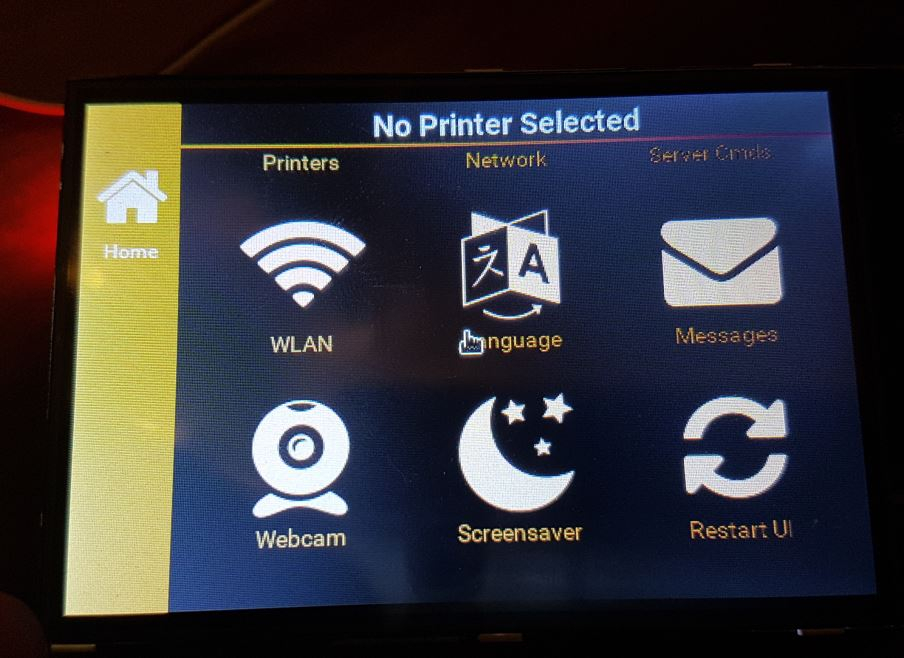
- #Raspberry pi zero w repetier server install#
- #Raspberry pi zero w repetier server serial#
- #Raspberry pi zero w repetier server update#
- #Raspberry pi zero w repetier server manual#
The repository we need to download, unpack and compile is mjpg-streamer-experimentalby Liam Jackson.

If you do not have Octoprint installed and don’t fancy installing the OctoPi distribution, then maybe you would prefer to add Octoprint onto your existing Pi OS? For this I would only be repeating (and not very well) what has already been written over on the OctoPrint Github Repository, so check it out. With the camera module connected and enabled, enter the following command in the Terminal to take a picture: raspistill -o cam.jpgįor more on command line usage, see : Installing Octoprint It told your Pi that there is a camera attached and it added three command line utilities. Select camera, then select Enable, and when prompted to reboot select Yes.Įnabling the camera using raspi-config did two things. Open the raspi-config tool from the Terminal: sudo raspi-config
#Raspberry pi zero w repetier server update#
You may need to be root, in which case : sudo apt-get update & sudo apt-get upgrade
#Raspberry pi zero w repetier server install#
We updated the Raspbian install on our Raspberry Pi by running : apt-get update & apt-get upgrade It’s been some time since the Pi was updated so we thought it was best to go through this first. Installing OctoPi would make this article end now and everything would be so straight forward.

You can then add on Repetier Server to this afterwards should you wish. To create a 3D print server on a Pi from scratch, the easiest route to follow is to download the OctoPi distribution and follow their instructions, which have everything included to get the Pi working with OctoPrint and the RaspiCam. However, Repetier server does seem faster when uploading gcode, or when choosing to print a previously uploaded file.įor the purposes of this article we will be focusing on using OctoPrint, because as mentioned earlier, it has built in camera support.

#Raspberry pi zero w repetier server manual#
Repetier server has an annoying bug where after you have ran a print job, the manual extrude feature either does not work, or wants to extrude forever, resulting in a switch off and switch on solution. Repetier Server does not have support for either of these although live streaming can still be accessed on port 8080 via the mjpg-streamer web interface, which gets installed as part of the set-up for the video side of things (more on that later). It also allows graphical visualisation of the printer extrusion paths live as they are being printed. Octoprint has built in camera support for time-lapse video or stills while printing, or even live streaming via it’s web interface. Repetier Host is a full work flow solution for 3D printing to create, visualise and edit printer paths, as well as full printer control. Repetier Server is not to be confused with Repetier Host, which is by the same developer. The short answer for the Hackspace is both, and we use whatever our own personal preference is. Initially to take time-lapse videos of 3D printing then moving onto other projects afterwards. What we need to do is add support for the RaspiCam and web video streaming. The Pi distribution was provided by myself and is Raspbian with Octoprint and Repetier Server loaded afterwards. The Hackspace already has a Raspberry Pi running as a 3D print server allowing the controlling of our Prusa Mendel through the two options of either Octoprint or Repetier Server. There will be a follow up post which will show how we are actually using it and how the camera and Pi is fitted to the printer. In this post I’ll cover what we did to get the camera module working and ready for use.
#Raspberry pi zero w repetier server serial#
The camera plugs directly into the Pi by way of a 15 pin Ribbon Cable, to the dedicated 15 pin MIPI Camera Serial Interface (CSI).

It is an add-on camera module for the Raspberry Pi which has no infrared filter, making it perfect for taking infrared photographs or photographing objects in low light (twilight) conditions. The Hackspace recently took delivery of a Raspberry Pi NoIR Camera Module from Farnell – full details are on their website.


 0 kommentar(er)
0 kommentar(er)
